The Environmental Corner
By Shaked From
So, I would like to start a little routine of learning together about the environment Kotare Village is settled in, as well as the environment that Kotare Village is and developing, I thought that it would be a nice way to learn, share and connect to the characteristics of our environment, as well as to how it is constantly changing and adapting – and we are with it.
I thought that a nice way to start would be to use a tool from the permaculture world – the ‘Scale of Permanence’ which relates to how permanent different elements in an environment might be:
Yeoman’s Scale of Permanence:
- Climate
- Landscape
- Water
- Access
- Trees
- Buildings
- Soil
For our specific needs here I will adapt the scale a little bit:
- Climate – physical
- Climate – social
- Landscape
- Water
- Access
- Soils
- Plant life
- Animal life
I’m planning to slowly go through the scale, learn and share a summary of different components that might sit in each level of the scale, and as needed and interest pulls, might add some other points.
And for today – Climate:
So this is the Wairoa district
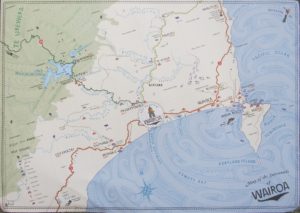
In general we can say that the Kotare Village climate is something between a temperate and a Mediterranean climate.
We are in climate zone: 9
Average rainfall: 1,600mm per annum
The graph below shows the average rainfall by month, which gives us a nice idea of how these 1,600mm of rain would be distributed along the year, luckily (or by design) it is not in 3 major rain events that create flood, destruction, and leave bare soil and drought behind (like some places around the world) rather in a fairly well distributed manner.
And then again – historic rain by year (per month)
Note that the numbers in the charts are for Wairoa town, in Marumaru (the Maori name for our small area) or more specific in the Mangapoike river valley the numbers are a bit higher as I wrote before.
Kotare Village is situated on the south of (and not shaded by) the large mountain of the area – Whakapunake (this is, according to the Maori tradition, where Maui hooked and fished the north island.
Being on the south side of Whakapunake means that our semi enclosed valley gathers the cold air flowing down from the mountain which creates a bit of a colder microclimate for us in Kotare Village (for better – cherries, apricots, gooseberries and worse – no avocados or anything like bananas)
Other than rain, Whakapunake receives the annual portion of snow on the picks, and for us, in the Mangapoike river valley on a lucky winter (and not on every one of them) we might get a couple of occasions to jump in the snow right here on our own patch of grass.
In terms of temperature, knowing the average temperature of one month wouldn’t give us much, it is much more important to understand the extremes of each month or the year, which in turn will help us understand what to get ready for, as well knowing what to expect in terms of frost will help us choose and plan anything around the management of plants and gardens… since I don’t have records of temperatures in our specific valley I’ll try to give here a summary of the seasons during the passing months:
Spring starts here during September, and we can usually feel and see it coming in, buds are swelling, early flowers are starting to blossom, the birds are getting more active, first foliage on deciduous tree is starting to appear, nights are still cold, and frost is still there many of the mornings, while the days are getting warmer and we can expect many sunny days, this shift goes on through October and into November, during November we can expect warmer nights and no regular frost, this is spring totally in and we can feel the start of summer, the first fruit is ripening, the grass is lush, animals are giving birth to many new young and the energies are high, this goes on through December and into January, January is summer, while the longest day of the year is in the end of December, it still gets hotter and hotter all the way through most of February and can reach into the high 30s (Celsius) several times during the summer, days are hot and sunny, swims in the river are a must, trying to avoid outside hard work during the hot hours, as seen in the chart above we might still get some rain through summer and some years are better or worse than others, fruit is still plentiful, though the grass is getting into flower and seed and going yellower while drying out and the large paddocks are changing color from the lush green of spring and into the yellow tinge of summer, the streams are getting lower in flow and the farm animals are all looking for shade. March is still summer, but we can always feel the start of autumn, we might have a first frost in march, a surprise one right in between the warm nights and the hot days, swims in the streams are still great and the days are still sunny, though nights are starting to get cooler there is much more chance for a good occasional rain the day grass might fall over and new fresh green lush grass finds its way through to the sunlight – this is autumn, this change goes on through April and into May, during May the streams are getting colder and its hard to justify a longer dip, the days are not as hot though there are plenty of sunny days and the occasional rain, there might be some frosts in the morning and nights are getting colder, June is the real start of winter, trees are losing their leaves, the days are short, rain is plentiful, the soil is nice and moist but it’s a bit too cold for the grass to be in full power growth, nights are cold and frosty and the streams are in full rush, we can expect plenty of grey wet days as well as beautiful sunny days all through winter, during July we can expect a frost almost every morning and it is usually still getting colder into August, the coldest we have measured here was -11c and we can expect one or two of those per winter, and here we are again back through to the next cycle.
From the description above we could see that planting outside and without protection anything like corn, beans, and pumpkins (or any other frost tender vegetables) before mid-November might be an unnecessary risk of needing to start again after the last frost have sent you back to the starting point (by now we have understood and developed some strategies for best use of our gardens in relation to the seasons and food production).
As well, expecting a single frost in mid-March to finish any tomato plant is a smart idea, and be ready with the winter vegetables (some seedlings) ready to go in the ground, grow well while the soil and the air are still warm and the days are still long, reach a good size and be ready to eat by and through the winter time is a great idea.
Wind is a very seasonal thing in our environment, at large, Kotare Village is a wind free area, but, and this is a large BUT, when it comes – IT COMES, and in regards to building we are sitting in an area defined as ‘very strong wind zone’
Autumn and spring are the times we expect wind to come, and 90% of the time these would be somewhat warm winds from the North/ North West, which is the general direction of winds in our area, as well as the placement of the village within the direction of the Mangapoike river valley.
The other 10% would be southerlies, which are known in New Zealand to be cold winds coming from the Antarctic pole, we can expect a couple of those per year.
Well, I think that’s enough to start with, I hope it might give someone some idea of what to expect, as well as situate the next ‘Kotare Environment’ post in some context.
For us, this is now mid-summer, which is exactly the time to start thinking about the next winter garden, and the rest of the preparations for the coming season, as well as enjoy and appreciate the abundant fruit, the sunny days and the cold rivers

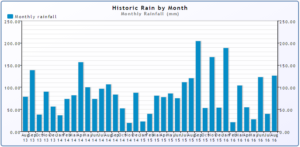
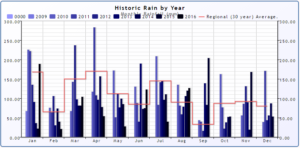
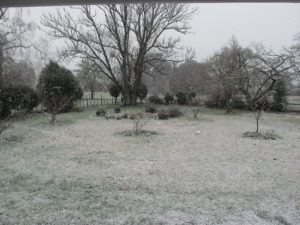
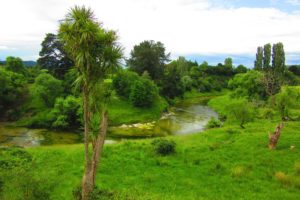
No comments yet.